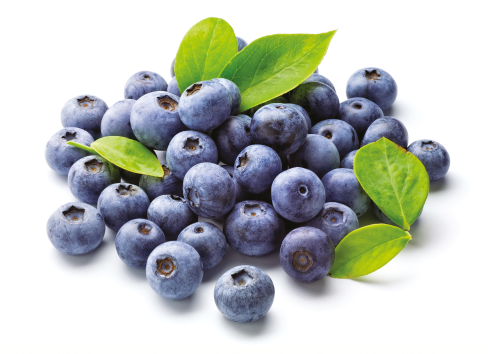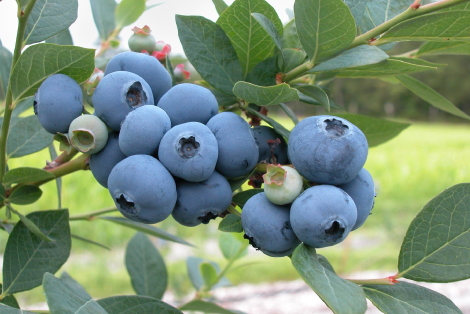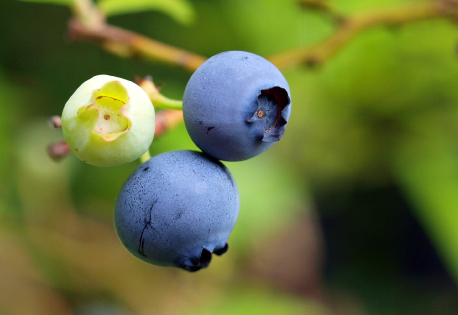
|
DESCRIPTION OF THE FRUIT
Small berry with a 5 to 16 mm diameter, with a blue to black color, covered with purple hairs, of a rounded shape with a flat end. It has a sweet taste. |
|
ORIGIN
ITS SCIENTIFIC NAME IS VACCINIUM MYRTILLUS AND IT BELONGS TO THE ERICACEAE FAMILY. The plant originates from northern Europe and is very common in Scandinavia. It is also known as mirtilo, anabias or manzanilleta. In Peru, one of the largest blueberry exporters of the world, it is grown in the coast region. |

|

|
VITAMINS, MINERALS, AND NUTRIENTS
BLUEBERRY Every 100 g of fresh fruit contains:
ENERGETIC VALUE
Approximately 57 kilocalories
CARBOHYDRATES
Contiene 14,4 g de carbohidratos
• 2,4 g of fiber • 10 g of sugar VITAMINS
• A: 54 IU
• B1 (thiamine), B2 (riboflavin), B3 (niacin), B6 • C (ascorbic acid): 9,7 mg • K: 19 µg MINERALS
• Calcium: 6 mg
• Magnesium: 6 mg • Phosphorus: 12 mg • Potassium: 77 mg |
HEALTH BENEFITS
|

|